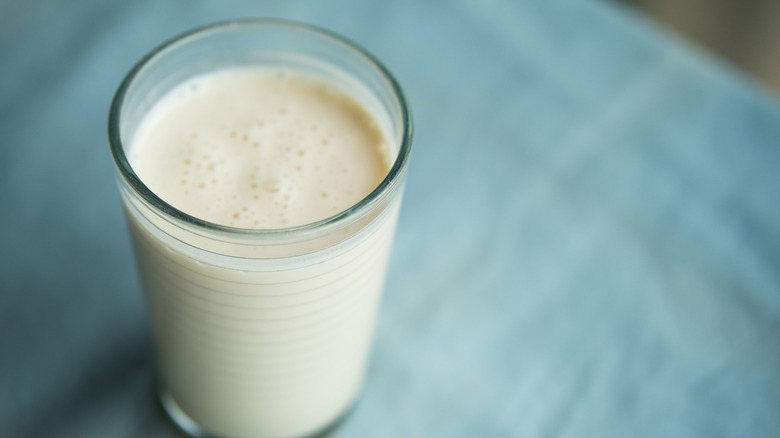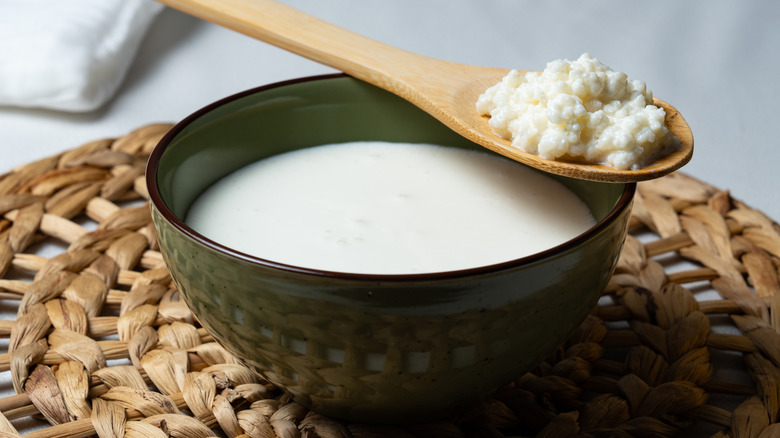Kefir Vs Yogurt: What's The Big Difference Anyway?
We may receive a commission on purchases made from links.
When you're standing in the dairy aisle looking over the yogurt section, you'll probably see bottles of kefir in the next section over. But what exactly sets the two things apart? Kefir and yogurt share some basic similarities: Both are fermented, made from milk, and have a tangy flavor, but there are a few key differences that give them unique properties.
Yogurt is thick and spoonable, while kefir has a thinner, drinkable consistency. Kefir can also sometimes have a lightly carbonated texture to it, unlike yogurt. This is completely normal, as this mild fizziness is a byproduct of kefir's fermentation process. While yogurt is considered tart, kefir is slightly more acidic, with a stronger flavor to match. Both yogurt and kefir are rich in probiotics, but kefir is quite a bit more potent, averaging about three times as many probiotics. (Here's a primer on probiotics, if you've ever wondered what they are and why we want to eat them.)
You can buy both products in the dairy aisle at most major supermarkets, usually in the same section. Kefir comes in pourable liquid containers (like these bottles of Lifeway Low Fat Kefir), while yogurt typically comes in tubs that are meant to be scooped from. Both are ready to eat straight from the fridge.
Kefir and yogurt are also made differently
Another big difference between kefir and yogurt is in how they're made. Yogurt is made when heated milk is inoculated with bacteria such as Lactobacillus bulgaricus and Streptococcus thermophilus, and then allowed to ferment for a few hours. Kefir, on the other hand, is made with what are known as kefir grains (like these Milk Kefir Grains from Cultures for Health). These "grains" are actually just grain-shaped bits of yeast and bacteria (or SCOBY, short for symbiotic culture of bacteria and yeast) that some people liken to the shape of cauliflower florets. The typical process for making homemade kefir involves combining the grains with milk and allowing it to ferment at room temperature for 12 to 24 hours. Once made, kefir will last up to two weeks in the fridge.
While yogurt is a more common cooking ingredient overall, kefir can be used directly in place of buttermilk in some recipes, since the two share some similar creamy and acidic flavor profiles. But most people wouldn't opt to drink a tall glass of buttermilk when probiotic-rich kefir is available, especially because store-bought kefir options often come sweetened and flavored, like this Low Fat Strawberry Kefir from Lifeway. Really, you can think of kefir as a close relation to yogurt. It just happens to be one you drink, with a slightly stronger flavor, a different production process, and maybe even a few bubbles. So, while kefir is quite different from typical yogurt, the gulf may not be as large as the difference between skyr and Greek yogurt.

